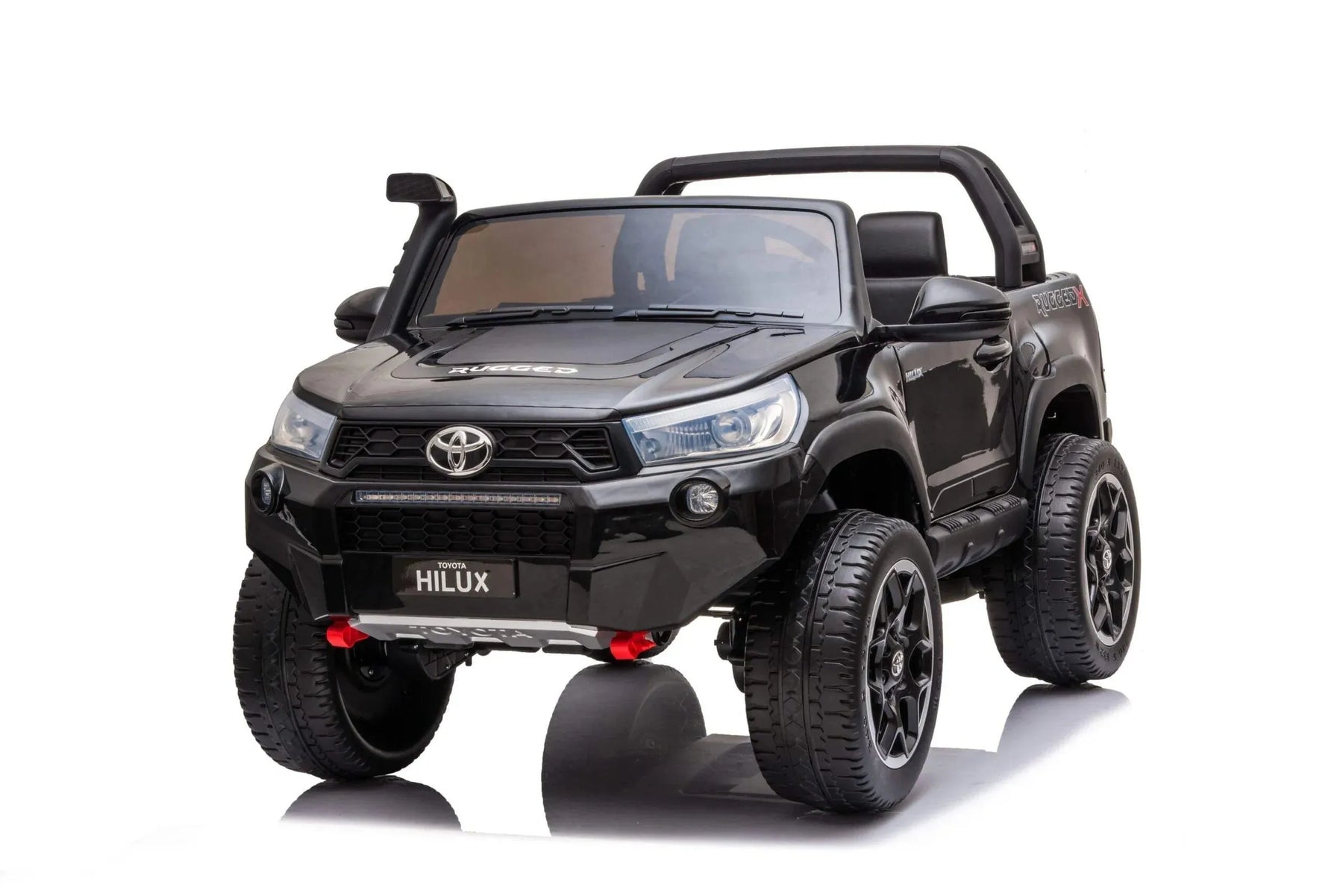
Understanding Voltage Systems
Ride-on cars come in various voltage options, with the most common being 24V and 48V. The voltage system directly impacts the car's performance, speed, and capability to handle different terrains.
24V Ride-Ons
-
Speed & Power
Generally suitable for younger children, providing a balanced mix of speed and safety.
-
Battery Life
Typically offers ample playtime on a single charge, ideal for standard backyard use or smooth surfaces.
-
Terrain Capability
Handles flat and slightly uneven terrains efficiently but may struggle on steep slopes or rough terrains.
One example of a popular 24V ride-on is the 4x4 Toyota Hilux 2-Seater for kids. This model is designed to provide a safe yet exciting experience for younger riders.
48V Ride-Ons
-
Speed & Power
Designed for older kids who seek more thrilling rides. These models offer higher speeds and enhanced power.
-
Battery Life
Longer battery life with faster charging times, perfect for extended outdoor adventures.
-
Terrain Capability
Superior performance on challenging terrains such as gravel, grass, and even minor hills.
The Kids Cars, a 48V ride-on, is a prime example of this category. With its powerful motor and advanced features, it provides an exhilarating ride for older children.
Choosing between a 24V ride-on and a 48V ride-on depends on your child's age, size, and riding preferences. While 24V models like the Can Am Maverick are excellent for younger children discovering the joy of ride-Ons, 48V options such as the Can Am Maverick cater to those seeking more excitement and advanced features.
Comparing Performance Factors: Speed, Power, Battery Life & More
Weight Capacity & Age Suitability
Choosing the right ride-on car involves considering weight capacity and age suitability to ensure safe usage.
Weight Limits
- 24V Models: Typically designed for younger children, these cars usually support a weight range of up to 68KG. They are ideal for kids aged between 3 to 10 years.
- 48V Models: Built for older children, often accommodating weights up to 90KG or more. These are best suited for kids aged 4 and above.
Age Suitability
- 24V Ride-On Cars: Perfect for beginners or younger children. The lower voltage ensures a safer, more controlled speed.
- 48V Ride-On Cars: Better for older, more experienced children. The higher voltage allows for greater speed and power, catering to those looking for more thrilling rides.
Understanding the weight limits and age recommendations helps in selecting a model that matches your child's physical capabilities and maturity level.
Terrain Performance & Slope Handling Ability
Evaluating terrain performance is crucial when choosing between 24V and 48V ride-on cars.
Grass and Gravel Performance
- 24V Models: Suitable for flat, even surfaces like concrete or short grass. They may struggle on uneven terrains such as gravel or tall grass.
- 48V Models: Equipped with more powerful motors, these can handle rougher terrains, including gravel paths and hilly areas with ease.
Slope Handling
- 24V Ride-On Cars: Generally, handle gentle slopes well but may lack the torque required for steeper inclines.
- 48V Ride-On Cars: Designed to tackle steep slopes efficiently due to their enhanced power output.
Choosing the appropriate model based on terrain ensures your child enjoys uninterrupted playtime regardless of where they choose to drive.